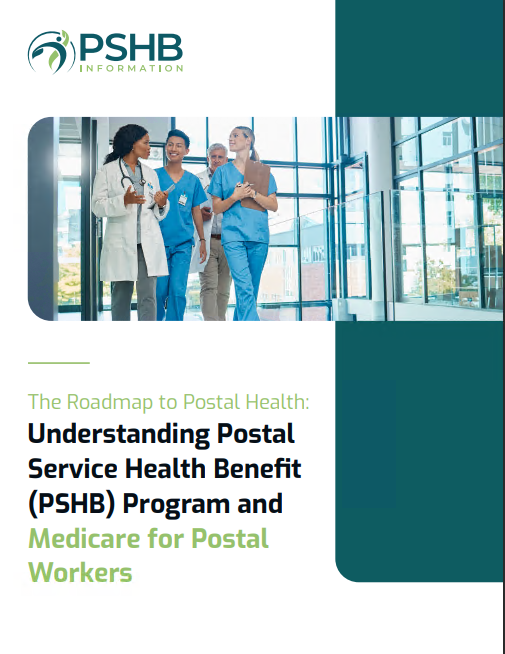Key Takeaways
-
The PSHB enrollment period is crucial for USPS employees and annuitants to secure health benefits tailored specifically to postal workers.
-
Understanding deadlines, Medicare integration, and plan options helps you make informed decisions during the 2025 enrollment season.
Navigating the PSHB Enrollment Period
The 2025 Postal Service Health Benefits (PSHB) enrollment period has arrived, marking a pivotal moment for postal employees, retirees, and their families. With the transition from the Federal Employees Health Benefits (FEHB) system to PSHB now fully implemented, knowing what to expect and how to prepare is more important than ever. This guide will walk you through everything you need to know to navigate this process smoothly.
What Makes PSHB Different?
PSHB replaces the FEHB program for postal workers, offering plans specifically designed to meet the unique needs of the USPS community. While many aspects of coverage remain similar, PSHB introduces several key features, including enhanced integration with Medicare and tailored pharmacy benefits.
Key Dates You Should Know
-
Enrollment Period: November 11 to December 13, 2024. Changes made during this window take effect on January 1, 2025.
-
Special Enrollment Opportunities: After the enrollment period, you can only make changes during Qualifying Life Events (QLEs), such as marriage, the birth of a child, or retirement.
Don’t miss these deadlines, as failing to enroll or update your coverage could leave you without the benefits you need.
Who Needs to Enroll?
If you’re an active USPS employee, retiree, or an eligible family member, PSHB is now your health benefits system. Certain individuals, such as retirees on or before January 1, 2025, may continue without enrolling in Medicare Part B, but most Medicare-eligible members must sign up to maintain PSHB coverage. Be sure to verify your specific requirements to avoid coverage gaps.
Understanding Medicare Integration
A significant aspect of PSHB is its alignment with Medicare for eligible enrollees. Here’s what you need to know:
-
Medicare Part B: Enrollment in Part B is mandatory for most PSHB participants who are Medicare-eligible. Exceptions apply to specific groups, including those retired before January 1, 2025.
-
Prescription Coverage: PSHB includes an Employer Group Waiver Plan (EGWP) for Medicare participants, seamlessly integrating prescription drug benefits.
The coordination between PSHB and Medicare is designed to reduce your out-of-pocket costs while ensuring comprehensive coverage. If you’re newly eligible for Medicare, take advantage of the Initial Enrollment Period (IEP) to avoid penalties.
Exploring Plan Options
PSHB offers a variety of plans to fit different needs, ranging from high-deductible options to those with low out-of-pocket costs. When choosing a plan, consider the following:
-
Family Size: Ensure the plan covers all eligible dependents.
-
Healthcare Needs: If you frequently visit specialists or require specific treatments, look for plans with broad provider networks and robust coverage.
-
Medicare Coordination: Some plans waive deductibles and offer premium reimbursements for enrollees who combine PSHB with Medicare Part B.
Carefully reviewing plan benefits during the enrollment period is essential to find the one that aligns best with your needs.
Cost Considerations
While specific private plan costs are not discussed, understanding general cost components helps you budget effectively:
-
Premiums: These are your monthly payments for coverage. Government contributions significantly reduce the amount you pay.
-
Deductibles: This is the amount you must pay before your plan starts covering services. Plans with lower deductibles may have higher premiums.
-
Coinsurance and Copayments: Be aware of these costs when selecting a plan, as they affect what you pay for services after meeting your deductible.
What Happens If You Miss the Deadline?
Missing the PSHB enrollment period can have serious consequences. Active employees may face delays in coverage changes, while retirees risk losing their benefits altogether. If you’ve overlooked enrollment, your next opportunity to make changes is during a QLE or the next open season.
To avoid complications, mark the enrollment dates on your calendar and start gathering necessary documents early.
Simplifying the Enrollment Process
Enrolling in PSHB doesn’t have to be stressful. Follow these steps to ensure a smooth process:
-
Review Your Current Coverage: Understand your existing benefits and determine whether they meet your needs.
-
Compare Plans: Use online tools and resources to evaluate PSHB plan options based on coverage, costs, and additional benefits.
-
Gather Required Information: Have your personal details, dependent information, and Medicare ID (if applicable) ready.
-
Submit Your Application: Complete your enrollment online or through other USPS-approved methods.
Taking a proactive approach ensures you’re ready to make informed decisions.
PSHB for Families
Your family’s health is just as important as your own, and PSHB provides coverage options to suit various family dynamics. When enrolling:
-
Verify Eligibility: Spouses, children under 26, and certain disabled dependents may qualify.
-
Choose a Suitable Plan: If your family includes members with unique medical needs, prioritize plans with flexible networks and comprehensive benefits.
-
Consider Medicare Coordination: For families with Medicare-eligible members, ensure the selected plan integrates smoothly with Medicare.
Keeping your loved ones covered requires careful planning and timely action.
Special Enrollment Periods (SEPs)
Outside the standard enrollment window, you may qualify for a SEP due to QLEs like:
-
Marriage or divorce
-
Birth or adoption of a child
-
Change in employment status
-
Loss of other health coverage
SEPs allow you to update your benefits to reflect life changes, ensuring continued coverage.
Additional Resources
To make the most of PSHB, USPS provides several resources, including:
-
Online Portals: Access detailed plan comparisons and enrollment forms.
-
Customer Support: Reach out to USPS benefits representatives for assistance.
-
Webinars and Workshops: Attend informational sessions to learn more about your options.
Taking advantage of these tools can make the enrollment process less overwhelming.
Common Enrollment Mistakes and How to Avoid Them
Even with preparation, it’s easy to make mistakes during enrollment. Here are some pitfalls to watch out for:
-
Waiting Until the Last Minute: Procrastination can lead to rushed decisions or missed deadlines.
-
Ignoring Medicare Requirements: If you’re eligible for Medicare, failing to enroll in Part B could jeopardize your PSHB coverage.
-
Overlooking Plan Details: Skipping the fine print may leave you with unexpected costs or inadequate coverage.
Avoiding these mistakes ensures you maximize your benefits.
Staying Informed
Health benefits are an evolving landscape, and staying informed about updates to PSHB is essential. Key ways to stay updated include:
-
Annual Notices: Carefully read the Annual Notice of Change (ANOC) sent by your plan provider.
-
USPS Announcements: Monitor official USPS communications for critical updates.
-
Community Forums: Engage with fellow postal workers to share insights and experiences.
Staying proactive keeps you ahead of potential changes.
Why PSHB Matters
PSHB represents a significant shift in how postal workers access health benefits. Its tailored approach ensures USPS employees and retirees receive comprehensive coverage, cost savings, and seamless Medicare integration. By understanding the enrollment process and plan options, you’re setting yourself up for better health and financial security.
Make the Most of Your 2025 Enrollment
The PSHB enrollment period is your opportunity to secure health benefits that work for you and your family. Don’t let this chance pass by—review your options, meet the deadlines, and take full advantage of what PSHB offers.






